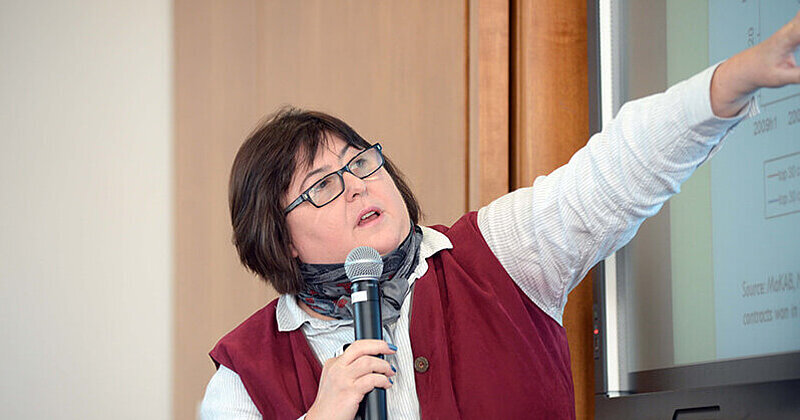
Many countries around the world fall short, the Professor of Democracy Studies shows.
Despite the importance of transparency in policy and democracy debates, a global measurement of real transparency has always been missing, making it impossible to examine if the adoption of national and international transparency regulation has actually improved the lives of citizens. The Hertie School Professor of Democracy Studies and European Research Centre for Anti-corruption and State-building Chair Alina Mungiu-Pippidi and her students developed precisely such an instrument. The computer mediated transparency index, or T-index, measures and compares where transparency and corruption stood in 129 countries in 2022. The index report was recently published in her article “Transparency and corruption: Measuring real transparency by a new index” in the journal Regulation and Governance.
“Implementation gap” between de jure and de facto transparency
Mungiu-Pippidi’s study focuses on comparing how transparent countries really are (de facto transparency) with what they have legally agreed to (de jure transparency). To measure de facto transparency, she examines the free access to comprehensive data about legal procedures that countries provide. She identifies 14 measures, including online access to legislation, public spending, and Supreme Court hearings, schedules and agenda.
She compares the implementation of these measures with five de jure components, which include the ratification of the United Nations Convention Against Corruption and membership in the Open Government Partnership. “States around the world may have adopted laws and ratified treaties to improve transparency, but we have to look at what concrete measures have been put in place to improve transparency and accountability,” the anti-corruption expert says. “Corruption is deterred by the capacity of every individual to defend herself from being abused and discriminated.”
Mungiu-Pippidi finds that an “implementation gap” does exist between states’ de jure and de facto transparency. Measures for transparency are also often lacking in the countries where they are needed most, she notes. The EU and North America perform the best in both, with fulfilment of 95% de jure and 72% de facto transparency measures. On the other hand, countries in the Balkans and the former Soviet Union exhibit the smallest gap between de jure and de facto transparency, with 74% and 59%, respectively. Countries in the Middle East and North Africa region and Sub-Saharan Africa show the largest gap: 60% vs 32% and 71% vs 33%, respectively. Mungiu-Pippidi finds that higher transparency is generally linked to lower corruption. However, there are important exceptions to the rule: for example, Argentina, Peru and Colombia lead in transparency, but not in anti-corruption.
The T-index can easily be used because every component is linked to a public webpage to enable feedback and updates via crowdsourcing. “By capturing real transparency, the index offers a roadmap to practitioners and activists in the field of government transparency,” says Mungiu-Pippidi. “It points both to where advocacy efforts should be directed and where infrastructure is still needed.”
Read the full paper in Regulation and Governance.
The Hertie School is not responsible for any content linked or referred to from these pages. Views expressed by the author/interviewee may not necessarily reflect the views and values of the Hertie School.
More about our expert
-
Alina Mungiu-Pippidi, Professor of Democracy Studies
